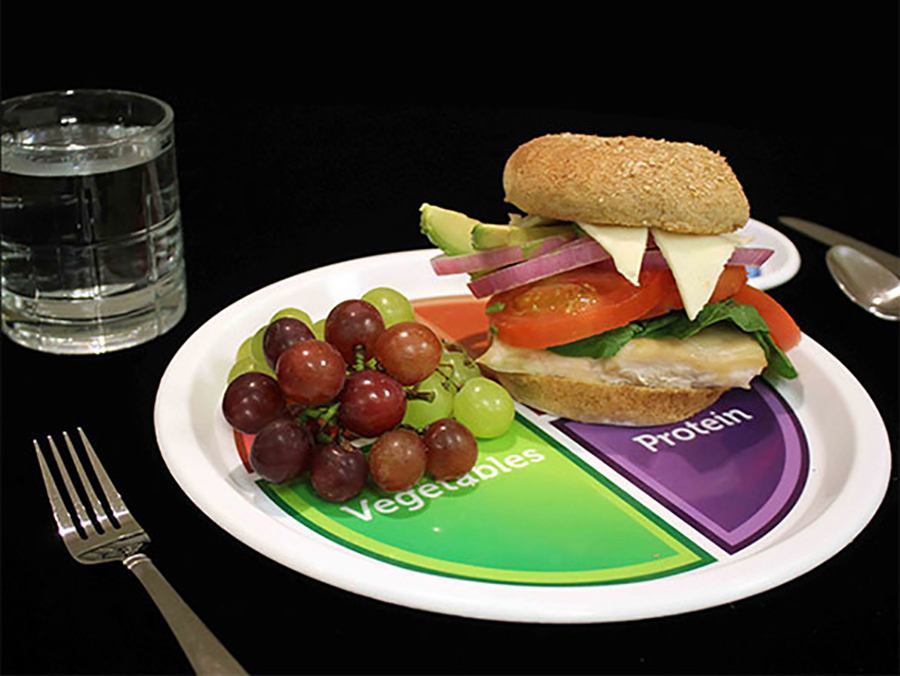More than 11% of sixth graders in Nevada’s Clark County went hungry some time in the previous month because there wasn’t enough food at home.
The number of people in the Las Vegas area who skipped meals or cut back their eating because they didn’t have enough food, meanwhile, grew by an estimated 47% during the pandemic.
Even for food-security professionals such as Macy Helm who closely track numbers such as these, a powerful new online dashboard developed at the University of Nevada, Reno, provides a fresh – and sometime startling – way to visualize the challenges of food security, nutrition and physical activity across Nevada.
The dashboard is likely to play an important role in development of new, evidence-based strategies to bring healthier, more active lives for participants in the federal Supplemental Nutrition Assistance Program – better known by its acronym, “SNAP.” With the depth of information it provides to planners and program managers, the SNAP-Ed Needs Assessment Dashboard is believed to be the first of its type in the nation.
Helm, SNAP Education coordinator with Extension, a unit of the University’s College of Agriculture, Biotechnology & Natural Resources, served as principal investigator and leader of the dashboard project. It proved to be an ambitious undertaking that drew upon expertise across the University.
Najat Elgeberi, an Extension evaluation specialist, oversaw a four-month effort to collect data that can shape educational programs targeted toward SNAP recipients. The nuts-and-bolts work of creating the dashboard was completed by Nick Etchegaray, a business-data analyst in the University’s Office of Planning, Budget & Analysis.
Their finished product provides a wealth of information: Are youngsters in rural eastern Nevada, for instance, more physically active than their peers in Clark County? (No.) How much food goes to waste every year in Lyon County? (At least 278 tons.) How many seniors in Nevada eat at least one serving of vegetables every day? (82%).
But beyond providing fact-based fodder for discussions about nutrition and exercise, the dashboard is designed to make life easier for researchers and managers of programs that provide SNAP education.
Helm said the Nevada Division of Welfare and Supportive Services, which provided funding for the dashboard project and commissioned its creation, will use it to develop statewide plans. State and federal agencies, including Extension and other providers of SNAP education, will use the information to address nutrition, physical activity, food security and food safety. And University researchers will have data at hand so they can quickly apply for health-related grants and projects.
Those plans and projects have become all the more important in recent years, Helm said, because a growing number of Nevadans – including children – are forced to skip or limit meals because they simply don’t have enough food available.
“The ability of this dashboard to inform programmatic decisions for a limited-resource community is incredibly impactful,” Helm said. “I look forward to seeing how this dashboard can be used to analyze trends related to dietary behavior, physical activity and food security in the next five to 10 years.”
Stephanie Chen, health education coordinator at the Washoe County Health District in Reno, said the recent data available on the interactive dashboard already is guiding her agency’s activities.
“The online interactive dashboard is easy to use and access,” she said. “It’s nice for the data to be all in one place.”
Before, Chen and other planners and program managers across Nevada would spend hours digging through stacks of published reports to find the facts that now are available quickly through the SNAP-Ed dashboard.
Bill Payne, dean of the College of Agriculture, Biotechnology & Natural Resources, said development of the dashboard marks an important step toward strengthening food-security programs statewide.
“Data related to community demographics and corresponding health-related behaviors is an essential tool to better address issues such as food insecurity, poor nutrition and lack of adequate physical activity in our state,” Payne said. “Our college’s Extension SNAP-Ed leadership and health and nutrition specialists, along with our partners, have worked hard to collect this essential data and make it publicly available. We hope this user-friendly dashboard will help us all to be more competitive in getting grants and resources to address these issues for the benefit of all Nevada residents.”
Creation of a user-friendly dashboard from a mishmash of data, however, proved daunting. Cody Grigg, the manager of decision support in the University’s Office of Planning, Budget & Analysis, said members of his team were challenged to shape a coherent and useful format for numbers that come from federal and state agencies in a wide variety of configurations. They worked closely with Extension’s Brian Luckey, SNAP-Ed evaluation coordinator, to clean up the data.
“Ensuring consistency of the data among the different sources is paramount to creating an engaging and informative user experience,” Grigg explained. The decision-support team brought experience building other dashboards – technically, they’re called “business intelligence tools” – for campus users. The SNAP-Ed dashboard is similar, although it includes additional branding so users are aware that it’s owned by the College and Extension.
Helm notes that the need for well-focused data sometimes bumped against the limited information that’s collected in lightly populated rural areas.
SNAP-Ed, she explained, directs very specific information, mostly about the need for healthy eating and physical activity, to its well-defined target audience composed of people who are eligible for SNAP benefits. With good data, SNAP-Ed can create better-focused programs that meet local needs.
But Helm said data isn’t always available about numbers of people who would be eligible for SNAP, sometimes isn’t available by county or ZIP Code, and sometimes doesn’t provide enough detail about diet and exercise.
Grigg said the SNAP-Ed dashboard will continue to evolve with the arrival of new data that allows even more comprehensive snapshots to help develop food-security and nutrition programs.
Some of the additional information will come from fresh collection of primary data that SNAP-Ed plans to undertake during the next fiscal year.
It’s all part of the University’s land-grant mission to serve the economic, social, environmental and cultural needs of Nevada, the nation and the world, Grigg said.
“I am proud that, in cooperation with Extension, we have created a tool to further enhance that pledge,” Grigg said. “Getting these data into the hands of Nevada business and community leaders and its citizens furthers their ability to truly understand and react to the needs of those in their communities.”
















